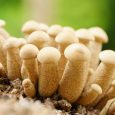The best thing you can wear is your smile, as the saying goes, which is why it’s critical to maintain a consistent dental hygiene routine. A day without brushing your teeth can lead to plaque buildup, leading to issues such as poor breath, tooth discoloration, and, worst of all, gum disease.
While dentistry has improved to the point where it can preserve many damaged teeth with novel treatments, these operations are expensive. Brushing and flossing your teeth regularly, however, is still the most significant way to avoid a hefty dental expenditure. Brushes and toothpaste are, of course, everyday household items, but have you ever pondered what components are contained in this teeth-cleaning tube? Fluoride and fluoride-free toothpaste are currently available on the market. In this article, you’ll learn more about the advantages and disadvantages of these products.
Fluoride: Most Well-Known Ingredient in Toothpaste
When it comes to oral health, you’ve almost certainly heard of fluoride. It is a well-known component found in many oral care products. It is often used to prevent cavities by strengthening enamel or the outer coating of the teeth. In addition, the correct quantity of fluoride has been demonstrated to aid with various oral difficulties in children and adults. Still, too much fluoride during the teeth’ development can produce dental fluorosis or mottling, a mild to severe discoloration. The majority of children aged eight and under, when their permanent teeth are still forming, are affected by this problem. Furthermore, some people have a fluoride allergy, and taking a larger dose of fluoride is dangerous for our health. Most of the adverse effects are bone and muscular deterioration, as well as neurological system issues.
Fluoride-Free Toothpaste as a Safer Alternative
As a result of growing concerns about fluoride as a primary ingredient in oral goods, oral health specialists and manufacturers have decided to seek alternatives to make a fluoride-free toothpaste that achieves the same results.
Natural components including cranberry extract, hydrated silica, and xylitol are used in non-fluoridated toothpaste to prevent bacteria from adhering to the teeth and finally remove plaque. Toothpaste without fluoride is particularly good at cleaning your teeth. However, it is commonly used for children’s toothpaste as too much fluoride can harm them.
Benefits of Fluoride-Free Toothpaste
One of the main advantages of fluoride-free toothpaste is that it provides a natural and synthetic-free solution, but consider the following advantages if you need more convincing.
- As previously stated in this article, too much fluoride might create health concerns. On the other hand, fluoride-free toothpaste is gentler on the teeth and is safe to consume if swallowed accidentally.
- It has the same cleansing capabilities as regular toothpaste. In addition, fluoride-free toothpaste contains substances that promote good oral hygiene and protect your teeth and gums from bacteria.
- Because fluoride-free toothpaste only contains natural components, you reduce waste on the planet when using it. Brushing your teeth while also doing good for the world is like hitting two birds with one stone.
Remember that using natural ingredients is a less dangerous and safer way to receive your required oral protection. Maintain that great smile by brushing your teeth regularly and visiting your dentist as needed.





